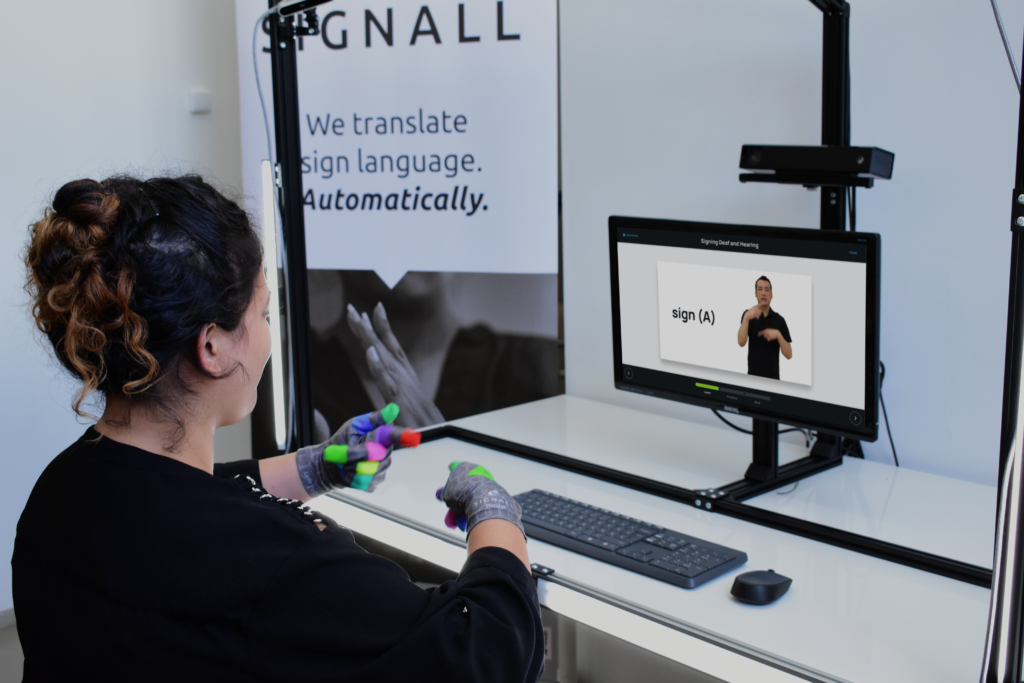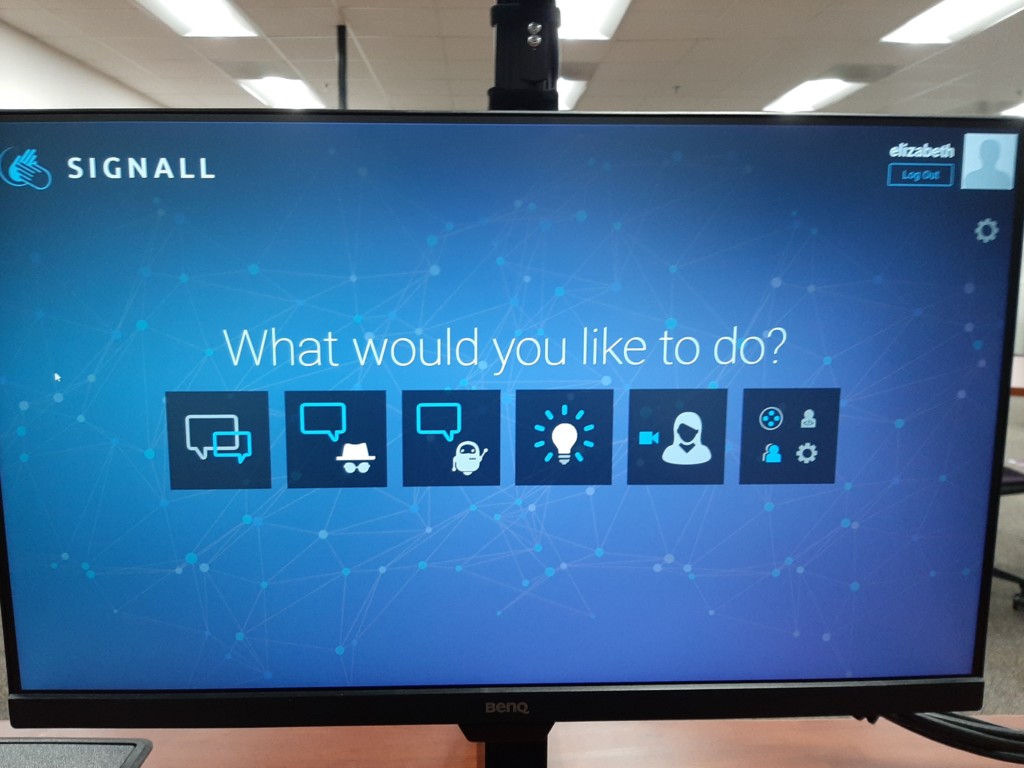PRAIRIE VIEW, Texas (November 10, 2020) – The John B. Coleman Library at Prairie View A&M University’s (PVAMU) Northwest Houston Center (NWHC) is the first library in the nation to pilot new virtual American Sign Language (ASL) technology. In partnership with SignAll Technologies, Inc., and currently in the testing phase, the project aims to improve library communication and provide better resources and access to all through an artificial intelligence program.
Elizabeth Jean Brumfield serves as the coordinator and principal investigator of the project.
“In the past, when deaf students took classes at the NWHC, they would have interpreters for lectures, but not for general questions, such as, ‘Where is the bathroom?’ or ‘Do you have this book?” said Brumfield, who is the head distance services librarian at the NWHC library. “The goal of this project is to provide a way to assist with general questions and make communication easier.”
In addition to benefiting deaf, hard of hearing (HOH), and other native ASL signers, the SignAll technology targets interpreters, counselors, faculty, students, and others who may encounter a person who uses sign language.
“When I first researched the company, I was impressed with the technology, but more importantly, I was impressed with their desire to assist hearing-impaired individuals,” Brumfield said.
Now that the technology is up and running for the testing phase, the program is seeking deaf individuals to use the software and to share the learning process with PVAMU faculty and staff.
“For this phase, we use deaf or native ASL signers to test the artificial intelligence programs into the system that identifies and distinguishes the various signs, which will later become part of the computer’s vocabulary for the next phase of SignAll usage,” Brumfield said. “I created deaf hearing scenarios related to library visits, which will be tested and programmed into the computer.”
Deaf individuals will receive instruction from a technologist from SignAll, which requires a visit to the NWHC. Those who want to learn ASL will need to get calibrated and receive instructions on how to use the system. After the initial visit, they can learn on their own computers and use the camera system when they visit the NWHC.
“We use the education and training functions of the computer system to assist library workers and others interested in learning ASL,” Brumfield said. “Once a person is in the system, the camera can detect movements and evaluate the accuracy of their signing. If it is incorrect, they receive feedback immediately and can re-do the sign. There are also games and activities to improve memorization and make learning fun.”
Many departments, consultants, and volunteers have assisted with this project, including PVAMU’s Information Technology Services, and Offices of Disability Services, Sponsored Programs, and Academic Affairs. Psychologist and sign language expert Dr. Dana L. Taylor and Dr. Holly Brown, a PVAMU alumna and interpreter at Wheeler Baptist Church, are also helping.
“As an HOH person, it is encouraging to find others that recognize challenges to communication,” Brumfield said. “Librarians have a responsibility to ensure access for everyone, but there is little information on how we are to accomplish that outside of the traditional ways. With innovations in technology, this is a great opportunity to serve the community while learning artificial intelligence, motion detection, and ASL.”
After the testing phase, the NWHC library will be equipped as a fully-operational SignAll site. Native ASL signers interested in testing the technology can email nwhc-library@pvamu.edu.
###
By Kendall Hebert


